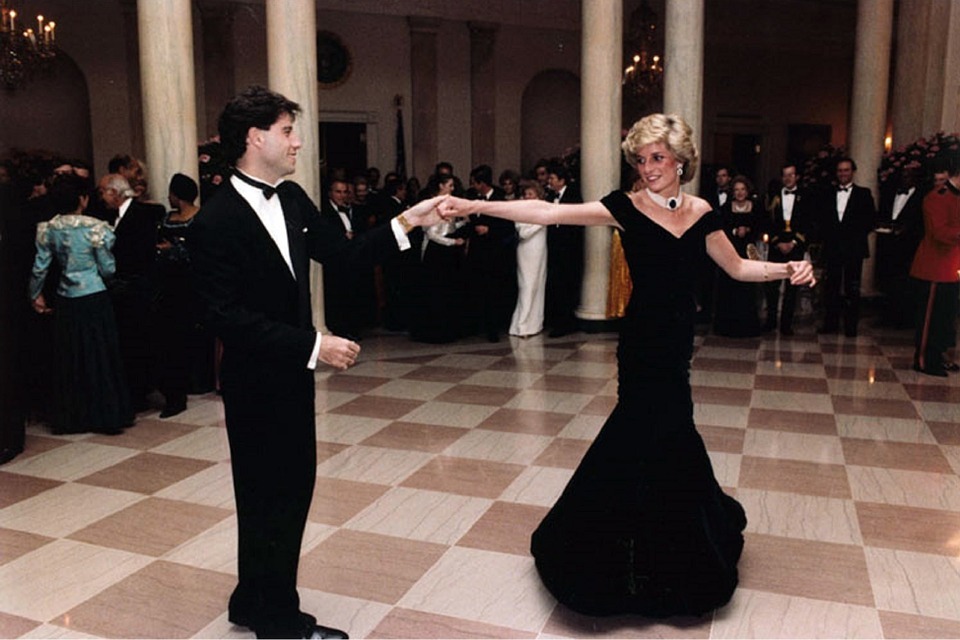This article was originally published by i-D UK.
There’s a lot more to Diana’s style legacy than that which the media has been pouring over for the last two decades. Yes, the Princess of Wales evolved aesthetically over time. Yes, she could certainly wear a pair of jeans. Understandably, her pieces are now fetching hundreds of thousands of dollars at auctions. But none of this is news, and none of us are surprised by it. Diana recognized her capacity for style the just like the rest of us did. And that’s why so many of her later pieces conveyed the powerful message we’ve seen picked up and embraced by everyone from Rihanna to Kim Kardashian to Beyoncé: fuck you.
The fact that we even take Diana’s early style choices into consideration is shocking. Upon her engagement to Prince Charles at 19, she was a posh teen and dressed accordingly. Her wardrobe consisted of blouses, sweater vests, and a skirt considered scandalous because you could see her legs when the sun shone through it. Mainly, we met Diana Spencer when was just a kid; when she was a young woman who’d yet to learn pushback because she’d been groomed for marriage and was naive enough to think the shitstorm she was wading into would die down upon exchanging vows in an Emanuel’s dress.
Meanwhile, also at 19, some of us were wearing Roxy tank tops and spiked belts to the club. Which only attests further to the fact that nothing we wear before 20 should be applied to our adult lives.
But in the case of Diana, she wasn’t given the luxury of time. Instead, she had two kids shortly after her marriage, and by the mid-1980s had begun using fashion to propel her own narrative. In place of the demure nanny in tiny flower prints, she was a grown-ass woman in velvet Victor Edelstein at the White House. In lieu of petticoats, she became the first woman in the Royal Family to ever wear trousers to an evening event. She wore chokers, different-colored satin gloves, and dressed her part for a Bryan Adams concert. She wasn’t Charles’ plus-one, she was his eclipse, usurping power through style choices — AKA something he would never have the guts to compete with.
Especially as she merged the worlds of motherhood and style awareness. On top of her public displays of affection for William and Harry (a first for the Windsor crew), she also replaced the stiffness of the standard royal aesthetic with ankle-length, free-flowing skirts and sweaters. (Some with bow prints, some with puppy prints, all perfect.) But through this, she effectively cemented herself as the first-ever Royal who wasn’t a regular mom, but a Cool Mom™. With only some jeans, she’d become the antithesis to uber-old school Charles who seemed stiff and dated by comparison. (Because we also knew that he’d never ride a log flume.)
On the day Charles confessed to his longtime affair with Camilla, Diana showed up to the Serpentine Gallery in what’s now been dubbed ‘The Revenge Dress,’ a short, silk number by Christina Stambolian.
But the thing is, the more distance Charles and Diana took from each other, the most space she allotted herself to scream “fuck you” via fashion. On the same day Charles publicly confessed to his longtime affair with Camilla Parker-Bowles, Diana showed up to the Serpentine Gallery in what’s now been dubbed “The Revenge Dress,” a short, silk number designed by Christina Stambolian that was nearly considered “too daring.” Then, on the same night her infamous 1995 interview with Martin Bashir was to air, she showed up to a public event in another stunning, super-sexy, low-cut gown — this time designed by Jacques Azagury.
Plus, it was black. A straight-up act of “go fuck yourself” rebellion. “As a royal she hadn’t been able to wear black unless it was for mourning,” Azagury explained. “It was her way of showing she was liberated.”
But then she went further. After successfully positioning herself as a grown-ass woman, as a doting (and modern) mother, and as the victor of a marriage that relentlessly tried to smother her, she went a step further still. She rang in Camilla’s 50th birthday in a leopard print one-piece, cavorted on the French Riviera with boyfriend Dodi Al-Fayed, and she maintained her affinity for nineties-centric athletic-wear (which she’d begun wearing before her divorce and helped highlight how young and hip she was — compared, of course, to her older husband and his mistress). Add to this her close friendship with Versace, her hands-on approach to design, and her celebrity circle, and she’d made fashion a platform on which to define who she was and want she wanted us to see her as.
By the time Diana passed away in August 1997, she had perfected the art of costume dressing. Every piece had the single goal of aligning themselves with a bigger picture and to help create a mythos that would assist her in outshining the monarchy. And it was successful. For 20 years, we’ve talked about Diana’s fashion risks, her triumphs, and how far she came. But by doing that, we’re missing out one of the most important chapters of her narrative: the power she wielded by assigning clothes a specific ethos. “Fuck you” is a powerful message made even more powerful by the way it’s sent.
The fact that Diana chose to relay it through fashion is all the more reason to applaud her for it. Or maybe that’s why every time I wear a choker, I do so as a sign of revenge.
Read: The 2000s were next level ugly which is why they should be celebrated.
Credits
Text Anne T. Donahue
Image via Pixabay
